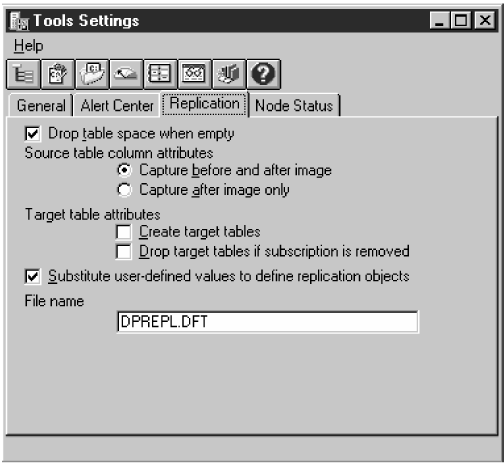

When setting up the replication environment, you can use the DB2 Control Center to manage the source and target table definitions and the control tables. Use the following high-level steps to administer your replication objects:
After you create the control tables and define the replication sources and targets, you need to configure and run the Capture and Apply programs to begin replicating data.
You can access your replication sources and targets through the Control Center. There are three containers in the Control Center for organizing the objects that you use to set up and maintain your replication environment:
Each object also has a menu for the actions that can be performed with the object.
If you are connecting to a DB2 for OS/390, DB2 for VSE, DB2 for VM, or DB2 for AS/400 server from the Control Center, you must configure connectivity to the remote database, catalog the remote databases, and bind packages to the remote databases.
To bind the database:
DB2 CONNECT TO dbname USER userid USING password DB2 BIND @DDCSxxx.LST ISOLATION CS BLOCKING ALL SQLERROR CONTINUE
Where CS specifies the cursor stability isolation level, and xxx specifies the platform name: MVS, VSE, VM, or AS/400.
If the user ID and password are different than the local logon ID and password for the Control Center workstation, you must explicitly connect to the database server using the Connect menu choice from the pop-up menu for your remote database object.
The Tools Settings notebook contains default preferences for the DB2 Universal Database administration tools. You can set replication default values on the Replication page of the notebook, as shown in Figure 15. These default values are used for all replication activities administered by the Control Center.
Figure 15. The Replication Page of the Tools Setting Notebook
 |